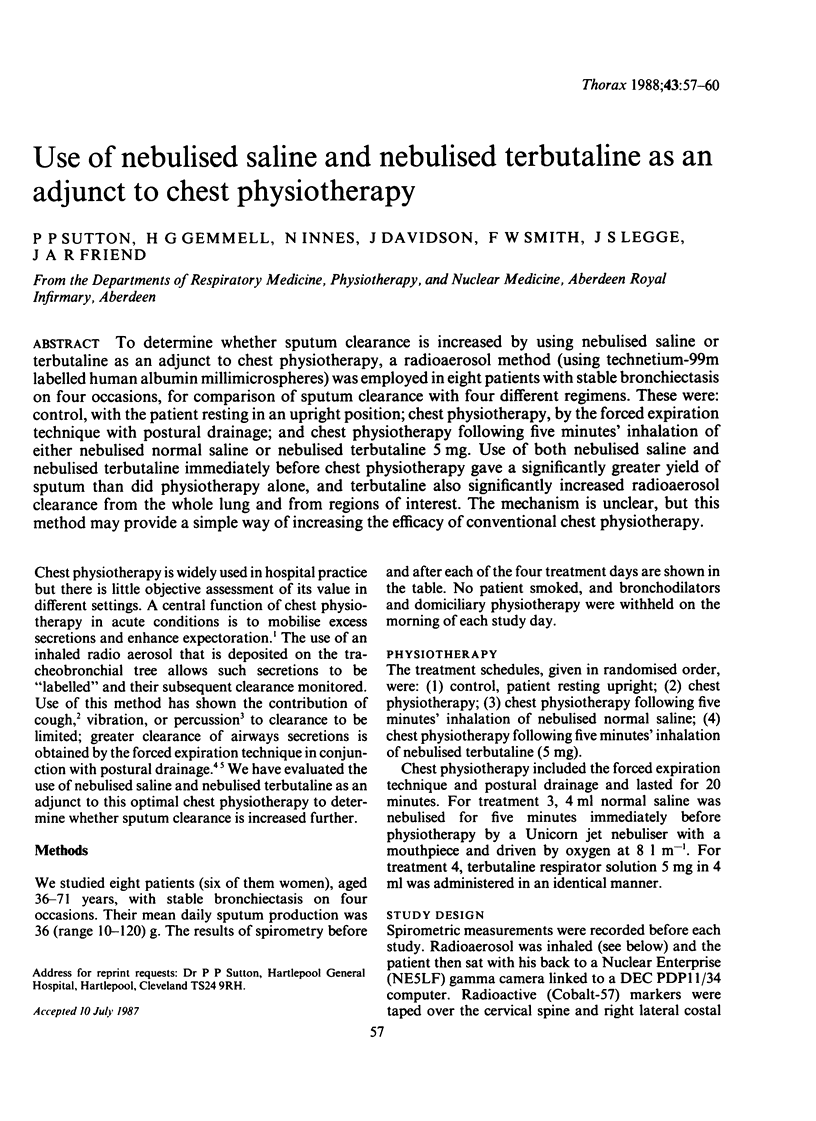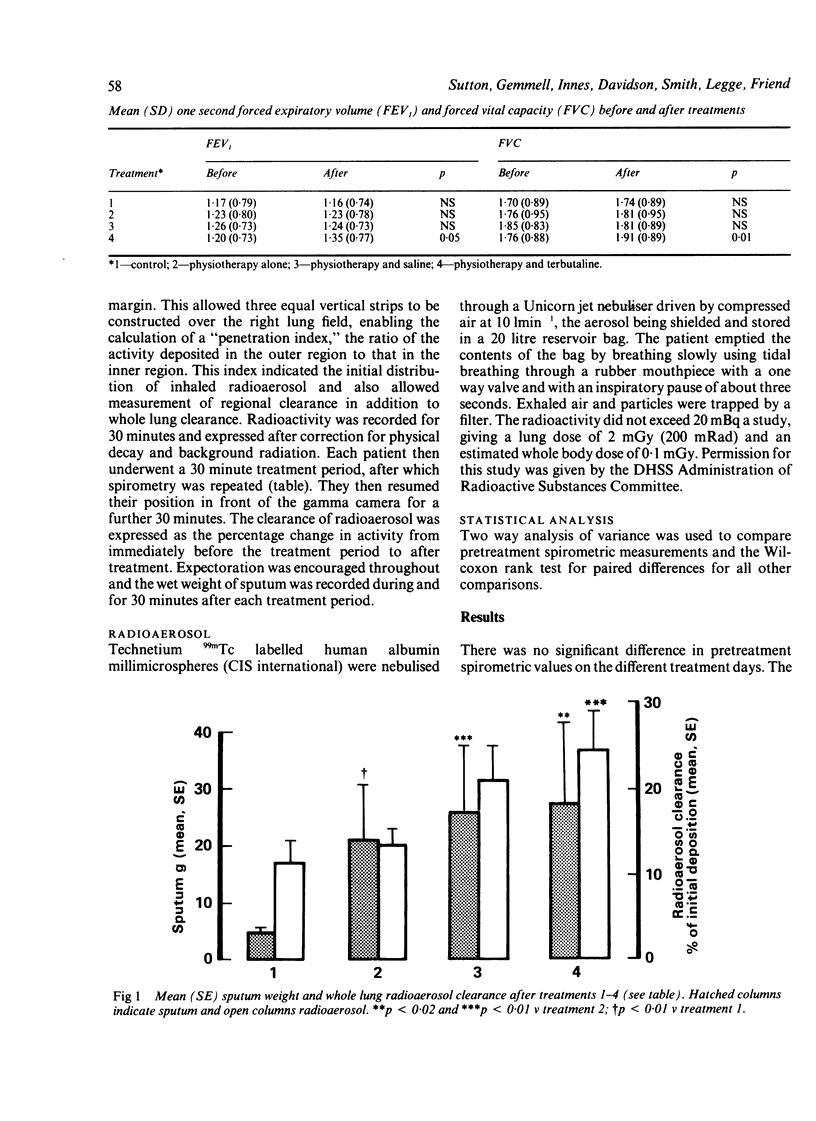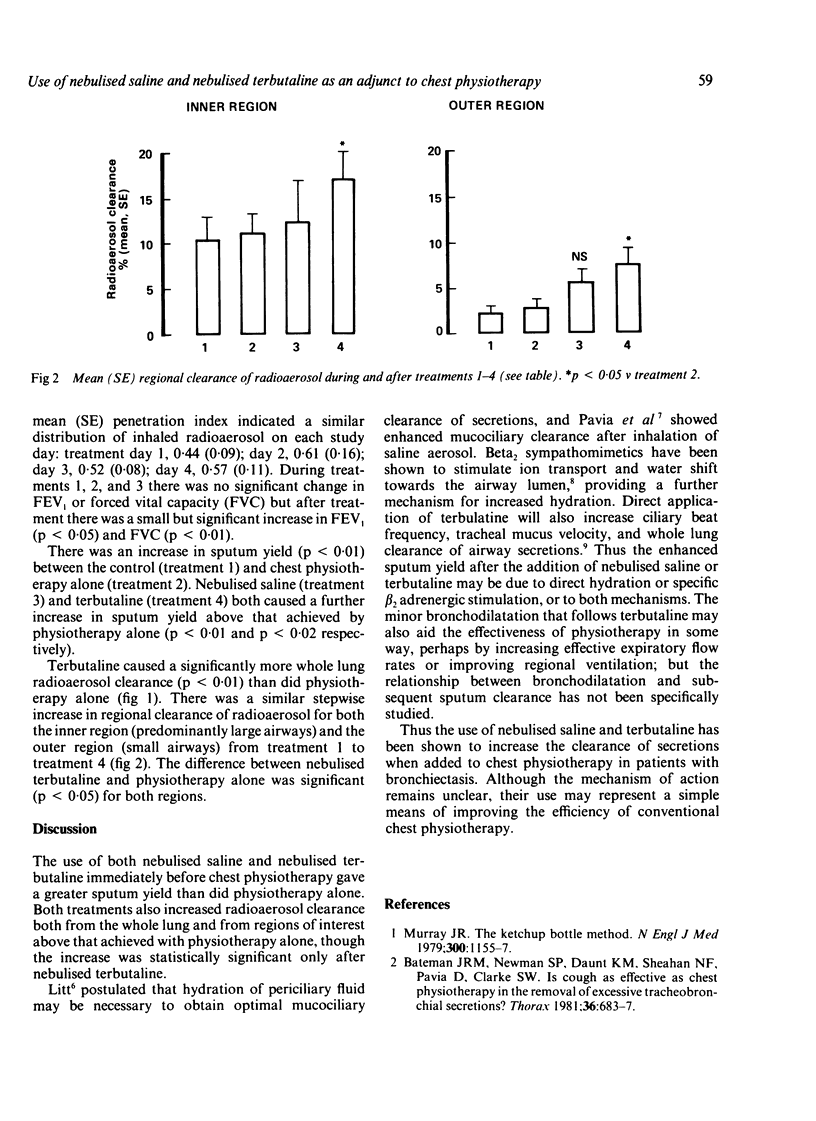Abstract
To determine whether sputum clearance is increased by using nebulised saline or terbutaline as an adjunct to chest physiotherapy, a radioaerosol method (using technetium-99m labelled human albumin millimicrospheres) was employed in eight patients with stable bronchiectasis on four occasions, for comparison of sputum clearance with four different regimens. These were: control, with the patient resting in an upright position; chest physiotherapy, by the forced expiration technique with postural drainage; and chest physiotherapy following five minutes' inhalation of either nebulised normal saline or nebulised terbutaline 5 mg. Use of both nebulised saline and nebulised terbutaline immediately before chest physiotherapy gave a significantly greater yield of sputum than did physiotherapy alone, and terbutaline also significantly increased radioaerosol clearance from the whole lung and from regions of interest. The mechanism is unclear, but this method may provide a simple way of increasing the efficacy of conventional chest physiotherapy.
Full text
PDF



Selected References
These references are in PubMed. This may not be the complete list of references from this article.
- Bateman J. R., Newman S. P., Daunt K. M., Sheahan N. F., Pavia D., Clarke S. W. Is cough as effective as chest physiotherapy in the removal of excessive tracheobronchial secretions? Thorax. 1981 Sep;36(9):683–687. doi: 10.1136/thx.36.9.683. [DOI] [PMC free article] [PubMed] [Google Scholar]
- Greenstone M., Cole P. J. Ciliary function in health and disease. Br J Dis Chest. 1985 Jan;79(1):9–26. doi: 10.1016/0007-0971(85)90003-8. [DOI] [PubMed] [Google Scholar]
- Litt M. Mucus rheology. Relevance to mucociliary clearance. Arch Intern Med. 1970 Sep;126(3):417–423. doi: 10.1001/archinte.126.3.417. [DOI] [PubMed] [Google Scholar]
- Murray J. F. The ketchup-bottle method. N Engl J Med. 1979 May 17;300(20):1155–1157. doi: 10.1056/NEJM197905173002008. [DOI] [PubMed] [Google Scholar]
- Nadel J. A., Davis B., Phipps R. J. Control of mucus secretion and ion transport in airways. Annu Rev Physiol. 1979;41:369–381. doi: 10.1146/annurev.ph.41.030179.002101. [DOI] [PubMed] [Google Scholar]
- Pavia D., Thomson M. L., Clarke S. W. Enhanced clearance of secretions from the human lung after the administration of hypertonic saline aerosol. Am Rev Respir Dis. 1978 Feb;117(2):199–203. doi: 10.1164/arrd.1978.117.2.199. [DOI] [PubMed] [Google Scholar]
- Pryor J. A., Webber B. A., Hodson M. E., Batten J. C. Evaluation of the forced expiration technique as an adjunct to postural drainage in treatment of cystic fibrosis. Br Med J. 1979 Aug 18;2(6187):417–418. doi: 10.1136/bmj.2.6187.417. [DOI] [PMC free article] [PubMed] [Google Scholar]
- van der Schans C. P., Piers D. A., Postma D. S. Effect of manual percussion on tracheobronchial clearance in patients with chronic airflow obstruction and excessive tracheobronchial secretion. Thorax. 1986 Jun;41(6):448–452. doi: 10.1136/thx.41.6.448. [DOI] [PMC free article] [PubMed] [Google Scholar]


